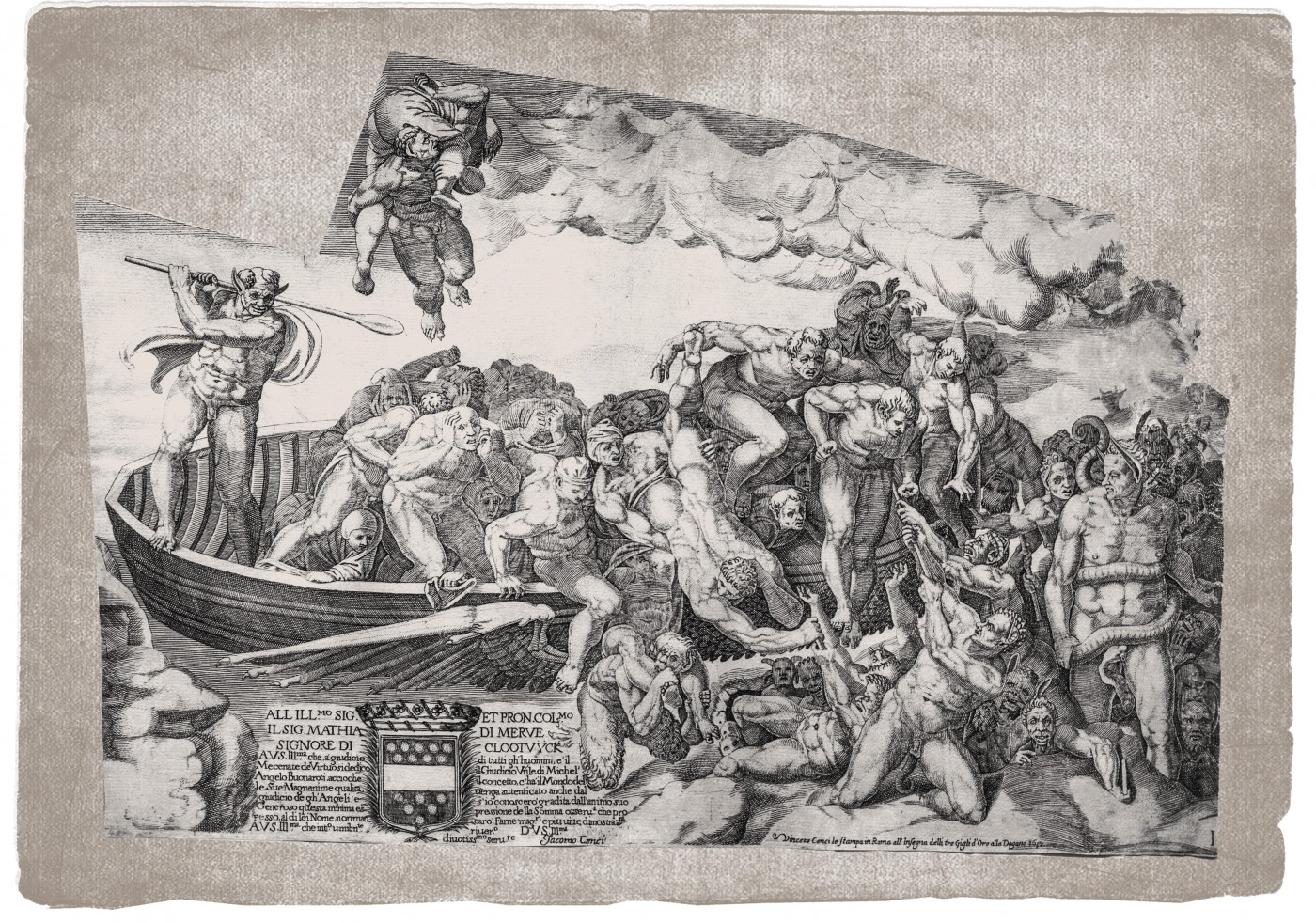The Last Judgment. 1650. (Sheet I.)

Afer the fresco of Michelangelo. 1536–1541.
Engraving. Ca. 1200 x 1074 (overall).
Composition from ten prints of irregular shape that are connected in the form of mosaic (puzzles). Engravings are marked with capital letters from "A" to "L" (letters "J" and "K" are missing). ONSL stores eight engravings from this series (prints "C", "H" are unavailable).
IV state of six.
Literature: Bartsch, v. 15, p. 395, № 25; Nagler, Bd. 5, p. 138; Le Blanc, t. 2, p. 295, № 18; The Engravings of Giorgio Ghisi / Introduction and entries by Suzanne Boorsch, catalogue raisonné by Michal and R. E. Lewis. – New York: The Metropolitan museum of art, 1985. – p. 53–57, № 9; Boorsch S. Vincenzo Cenci, erased publisher / Suzanne Boorsch // Source: Notes in the History of Art / The University of Chicago Press. – 2012. – Vol. 31/32; № 4/1: Special issue in memory of Leo Steinberg (1920–2011). – p. 51–57.
The work "The Last Judgment" was created by Ghisi in the middle of 1540s. It was not the first print made from the famous fresco in the Sistine Chapel, created by Michelangelo in 1536–1541. A large composition of a size of 10 engravings Ghisi made in 1543–1548 at Niccolo della Casa and printed by Antonio Salamanca. By the end of the XVI century many other engravings were made, but Ghisi’s work surpasses them: it is closer to Michelangelo's fresco in a relative scale of shapes, while others significantly distort or make changes in Michelangelo's composition.
Sheet I.
350 x 520.
In the lower right corner: I.
At the bottom of the image – the coat of arms surrounded by palm leaves, on both sides of the coat of arms there is a dedication: ALL ILLm° SIG. ET PRON. COLmo IL SIG. MATHIA DI MERVE SIGNORE DI CLOOTVYCK. A.V.S. Illma che a giudicio di tutti gli huomini, e il Mecenate de Virtuosi dedico il Giudicio Vnle di Michel'Angelo Buonaroti, accioche il concetto, c'ha'il Mondo del le Sue Magnanime qualita, uenga autenticato anche dal guidicio de gli Angeli, e s'io conoscero gradita dall' animo suo Generoso questa minima espressione della Somma osserua che professo, al di lei Nome nonmancaro, Farne magri epiu uiue dimonstrazm A.V.S.Illma cheinto umilmte riuero. DVS Illma diuotissmo serure Jacomo Cenci.
(To the most illustrious and most honorable Matthys van de Merwede, Lord of Clootwyck. To your most illustrious Lordship, who in the judgment of all men is the Maecenas of artists, I dedicate the Last Judgment of Michelangelo Buonarotti, in order that the idea the world has of the quality of your magnanimity may also be authenticated by the judgment of the angels, and if this small expression of the high regard that I profess receives your approval, I will not fail to make even greater and more ardent demonstrations in your honor. Most humbly and reverently dedicated to your Lordship by your most devoted servant, Giacomo Cenci.).
To the right of the dedication text, under the figure of a demon: Vincenzo Cenci le Stampa in Roma all'Insegna delli tre Gigli d'Oro alla Dogano 1650.
Inv. G 649.
Cenci, Vincenzo (? – ?) – italian publisher who worked in Rome around 1650. Son of Giacomo Cenci. In 1648 he married a representative of the most famous publishing family in Rome de Rossi – Dorothea Vittoria, and for that he received a dowry – about 330 copper plates. Only six engravings with his signature are known at present.
Mattias van de Merwede, van Klotwik (1613–1664) – dutch nobleman, poet. He visited Italy in 1647–1650, supported the artist G.B. Castiglione, whose works were published by Giovanni Giacomo de Rossi. Rossi dedicated to him one of the best etchings of Castiglione – "Genius Castiglione". Merwede wrote a book about his trip to Italy, which was published in Hague in 1651.
Views: 3438